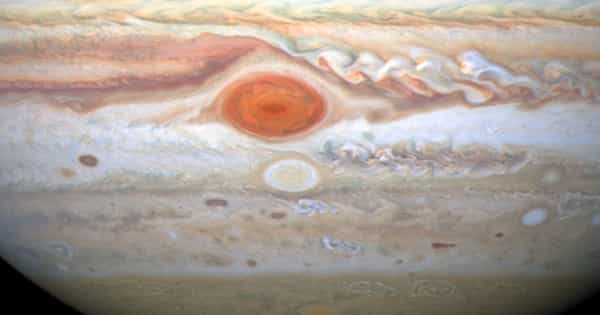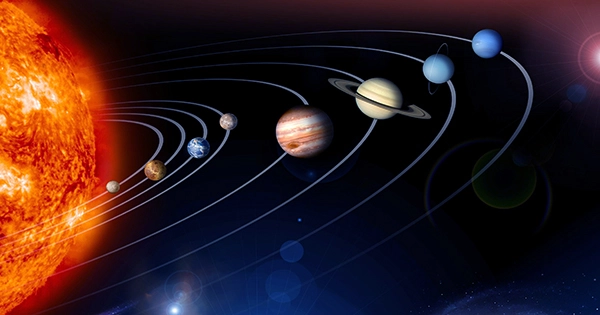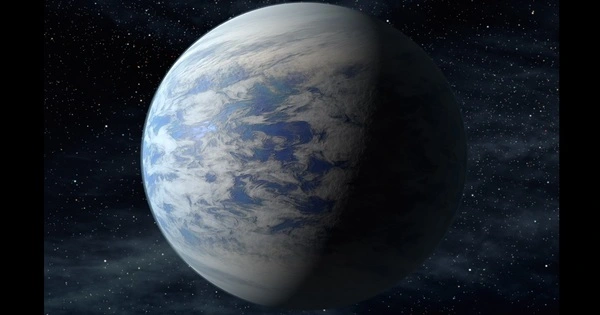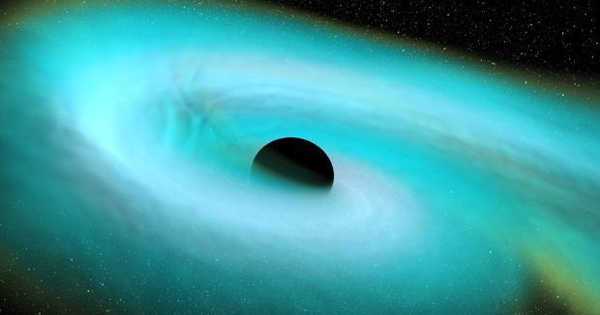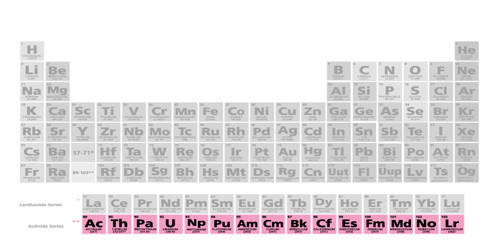The Great Red Spot on Jupiter is the most powerful storm in the solar system. Despite previous research indicating that the storm has been shrinking since at least the 1800s, researchers from the University of California, Berkeley, argued at a conference of the American Physical Society’s Division of Fluid Dynamics that there is no evidence that the vortex that powers cloud formation is changing.
For more than a decade, NASA’s Hubble Space Telescope has kept a close eye on Jupiter’s Great Red Spot. It’s a massive roiling storm the size of the Earth that has been observed on the planet’s surface for more than 150 years — and it’s still as mysterious as ever.
Hubble, NASA’s most powerful space telescope, has discovered a mysterious change in Jupiter’s Great Red Spot. The location is a raging 10,000-mile-wide cyclone large enough to swallow the entire planet. Since astronomers began observing it around 150 years ago, it has shrunk and become more circular. Nobody could measure the speed of its spiral motion until Hubble focused its attention on a distant orange dot in 2009.
Researchers analyzing Hubble’s regular “storm reports” found that the average wind speed just within the boundaries of the storm, known as a high-speed ring, has increased by up to 8 percent from 2009 to 2020.
Hubble has now discovered that the Red Spot’s average wind speeds are gradually increasing. According to NASA, wind speeds along the storm’s boundaries increased by 8% between 2009 and 2020, with winds at the perimeter reaching speeds in excess of 400 mph.
“We can’t continuously measure the winds on-site because we don’t have a storm chaser plane at Jupiter,” Amy Simon, a scientist at NASA’s Goddard Space Flight Center studying the storm, said in a statement. “Hubble is the only telescope with the kind of temporal coverage and spatial resolution that allows us to capture Jupiter’s winds in such detail.”
Michael Wong and Amy Simon, planetary scientists, recently analyzed a decade’s worth of Hubble data on the Great Red Spot’s wind speeds, which can exceed 400 miles per hour. NASA announced on Monday that their research indicates that the cyclone’s outer band is accelerating: Wind speeds increased by up to 8% between 2009 and 2020. At the same time, its inner region has slowed significantly.
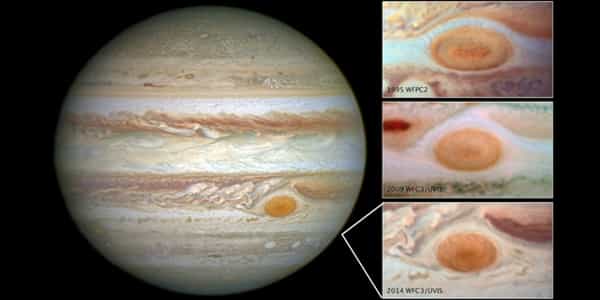
Speeding Up
The resolution is truly astounding, allowing researchers to detect differences in wind speeds of less than 1.6 miles per hour. “We’re talking about such a small change that we wouldn’t know it happened if you didn’t have eleven years of Hubble data,” Simon explained. “We have the precision we need to spot a trend with Hubble.”
Despite detailed records, we still don’t know much about the Great Red Spot. Finding out what the increase in wind speed means is difficult because “Hubble can’t see the bottom of the storm very well,” according to Michael Wong of the University of California, Berkeley, who led the research. “In the data, anything below the cloud tops is invisible.”
“However, it’s an intriguing piece of data that can help us understand what fuels the Great Red Spot and how it maintains energy,” Wong added. Overall, the average wind speed at the location is increasing, but only slightly — less than 1.6 miles per hour per Earth year. Nobody knows what the shifting winds reveal about the storm as a whole.
“That’s difficult to determine because Hubble can’t see the bottom of the storm very well. In the data, anything below the cloud tops is invisible “Wong stated. “However, it’s an intriguing piece of data that can help us understand what fuels the Great Red Spot and how it keeps its energy.”
The storm has survived for so long because it is trapped between two jet streams — bands of Jupiter’s atmosphere moving in opposite directions. NASA scientist Glenn Orton previously told Insider that these are “feeding momentum into the vortex.”
Because of its shrinking size, some scientists believe the storm will collapse and vanish within a few decades. Others are not convinced. According to Philip Marcus, a UC Berkeley researcher who co-authored the new study with Wong and Simon, “the Great Red Spot is not in danger of disappearing.”
Furthermore, Marcus predicts that the vortex’s heating and cooling patterns will continue to fuel the Great Red Spot. “I think that unless something somewhat cataclysmic happens on Jupiter, it will last indefinitely until the jet streams change, which I would say is likely hundreds of years,” Marcus said at the news conference. “Of course, I probably just kissed it goodbye, and it’ll probably fall apart next week, but that’s how science works.”
